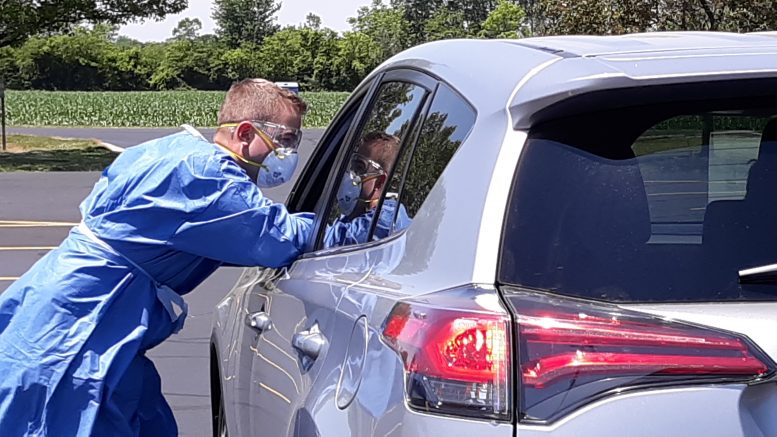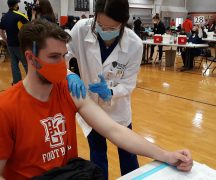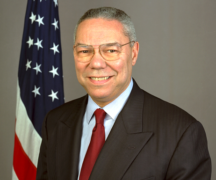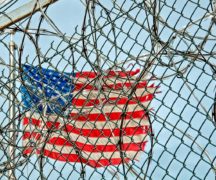While Ohio has thus far eluded COVID-19 surges seen elsewhere in the Midwest, the new case averages (about 1,000 per day) and deaths (about 19 per day) remain stubbornly in place.
Spread of the new coronavirus, which causes COVID-19, has waned in Ohio’s larger metropolitan areas but accelerated in its rural swaths.
“It’s a little busy with just what you expect,” said Kay Conley, director of administration at Stark County Public Health Department. “Schools getting back, universities, sports, and still long-term care facilities.”
In the county, recently designated as “red” or an area with very high levels of spread per the Public Health Advisory System, Walker Elementary School switched from in-person to remote learning after an outbreak of seven cases and more students quarantined.
In Delaware County, which also turned “red” last week, Health Commissioner Sheila Hiddleson made similar observations. The cases she’s seeing, she said, have less to do with what happens inside school as what students do afterward.
“Parties, slumber parties, just kids being kids,” she said.
Ohio has avoided some of the higher infection rates seen in states like Wisconsin, Iowa, Arkansas, Missouri, Minnesota and others, according to data compiled by The New York Times.
As of Monday, nearly 152,000 Ohioans have been infected with COVID-19. At least 4,746 have died and more than 15,000 hospitalized.
Continuing a trend from the summer, younger people are driving Ohio’s new caseload. In September, 20- to 29-year-olds comprised 27% of new cases — well beyond any other age group.
One likely culprit: universities. At Ohio State University, 2,856 students contracted COVID-19 between Aug. 14 and Saturday. At Miami University, at least 1,512 students contracted COVID-19 between Aug, 17 and Sunday.
COVID-19 continues to grow increasingly prevalent in rural Ohio. When adjusted for population, counties like Mercer, Putnam, Shelby, Pike and Lawrence are showing towering infection rates.
In Mercer County, health department administrator Jason Menchhofer said contact tracers are seeing a pattern of spread through households in larger families living in rural pockets of the county.
“We really think the majority of it is spread out in the community, which could be happening in things like bars, and we hear through contact tracing there’s quite a bit of spread happening in households,” he said.
There are, however, hopeful indicators.
As of the most recent data from Friday, the positivity rate is below 3% — about half what it was during a July case surge.
Less than 600 Ohioans are hospitalized with the coronavirus, compared to more than 1,100 in late July.
Gov. Mike DeWine issued a news release Monday highlighting a Reuters article detailing Ohio’s comparative success compared to other Midwest states.
He also praised President Donald Trump, whose administration announced Monday plans to distribute 100 million low cost, rapid-result antigen tests to states by week’s end.
“We appreciate the Trump Administration providing millions of these innovative tests to Ohioans and our administration will continue to work on a plan to best incorporate them into our overall testing strategy in the coming days,” DeWine said. “Making a rapid, low-cost test available, demonstrates Abbott’s ingenuity and addresses our critical need to rapidly identify who has the virus. By knowing who is COVID-19-positive, especially among those in vulnerable communities, we can take immediate steps to limit the spread and control its impact.”
***
Also from Ohio Capital Journal:
Many Ohio counties need more poll workers. Is yours one of them?
Ohio voters need your help.
Though there is an unprecedented number of citizens planning to cast absentee ballots this fall, counties throughout the state are still in need of more poll workers for Election Day.
Secretary of State Frank LaRose is encouraging Ohioans to sign up to receive training ahead of the Nov. 3 election.
As part of the recruitment drive, LaRose has compiled data on how many Democratic and Republican poll workers are needed for each county. (Polling places are served by bipartisan teams of trained officials.)
The state has identified a bare minimum number of sign-ups needed based on the amount of precincts each county has. The latest update on Sept. 22 showed dozens of counties had not yet reached the minimum threshold for either party. READ MORE
FirstEnergy says it didn’t have “strategic direction” of nuclear plants during bailout scandal
FirstEnergy is trying to distance itself from a massive corruption scandal that has gripped the Statehouse since July, but it’s unclear whether federal or state officials are buying it.
The Akron-based corporation is repeatedly referred to as “Company A” in a federal affidavit describing what might be the biggest bribery scandal in the history of Ohio. Then last week, Ohio Attorney General Dave Yost referred to the company directly when he filed a civil suit against it and several others who were involved in the passage of a $1.3 billion nuclear bailout.
But FirstEnergy says that since 2016 it hasn’t had strategic control of FirstEnergy Solutions, the company that owned the reactors. The company now has a new name, Energy Harbor, after emerging from bankruptcy earlier this year. READ MORE
Commentary: When politicians use hate speech, political violence increases
Politicians deepen existing divides when they use inflammatory language, such as hate speech, and this makes their societies more likely to experience political violence and terrorism. That’s the conclusion from a study I recently did on the connection between political rhetoric and actual violence.
President Donald Trump is not the only world leader who is accused of publicly denigratingpeople based on their racial, ethnic or religious backgrounds.
In the 2019 parliamentary campaign in India, politicians from the ruling Bharatiya Janata Party targeted Muslims as part of a widespread electoral strategy to galvanize Hindu nationalism. Similarly, in the 2019 Polish election, incumbent president Andrzej Duda made demonization of the LGBT community as well as foreigners the centerpiece of his successful reelection campaign.
Hate speech has also figured prominently in the recent rhetoric of political leaders in a variety of countries including Russia, Colombia, Israel, Egypt, Ukraine, the Philippines, Italy, Greece, Sri Lanka and Iraq.
These remarks are not just empty rhetoric or political theater. My research shows that when politicians use hate speech, domestic terrorism increases – in the U.S. and in other countries. READ MORE





